
When I was planning my first vegetable garden, I had a romantic vision of how it would go.
I would sit on the back porch with a bowl full of peas, fresh from the garden. With great pride, I’d look out at neat rows of lettuce, carrots, beets, parsnips, herbs, and potatoes, shelling the tender peas into a clean bowl. A few wouldn’t make it into the bowl—how plump and sweet they’d be!
This scenario did play itself out. But soon the next batch of peas needed to be shelled.
And the next.
And the next.
And the next.
And the next.
Shelling peas became a chore.
Now I only grow snap peas, which I like just as much, but require no shelling.
Over the years, I’ve picked up quite a few tips, tricks, and reality checks for growing vegetables and berries at home. Here are 10 of them.
#1 You don’t have to do raised beds.
Don’t think you must have raised beds just because everybody else is using them. Raised beds have their pros and cons. Personally, I think the cons outweigh the pros.
Raised beds dry out faster than in-ground beds, requiring constant watering; it’s awkward to impossible to get a shovel into one to do any serious work; and the sides provide convenient hiding places for slugs and snails.
In this entertaining post, Noel Kingsbury agrees, and encourages people to not simply “run with the herd” when it comes to using raised beds.
#2 Be safe about heavy metals.
I went to a talk about heavy metals in the vegetable garden by Dr. Linda Chalker-Scott, a Washington State University professor, at the Northwest Flower and Garden Show in Seattle this year, and it was eye-opening.
Some takeaways: Never use old pressure-treated lumber (no longer sold), a.k.a. CCA (Copper, Chromium, Arsenic), for raised beds. This is the lumber with the vertical hash marks imprinted in it.
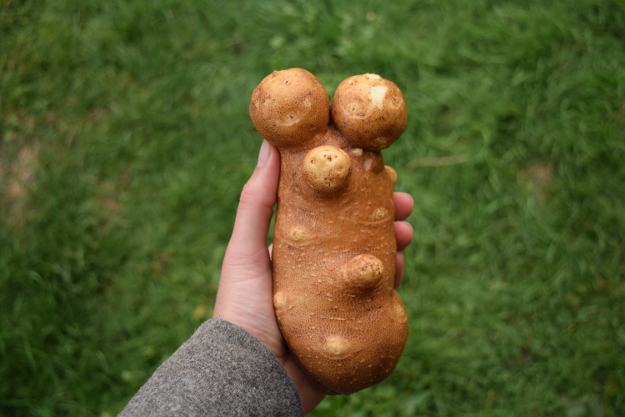
Have your soil tested if you have any suspicion that there may be heavy metals in it. That may be the case if there is old, peeling (lead) paint nearby. Or, if you are growing vegetables by the road (usually not a good idea, according to Dr. Chalker-Scott). Or, if you garden in the country on land that was once farmland—it may have been sprayed with chemicals containing heavy metals.
Uncertified organic products may contain heavy metals. I was surprised to learn that kelp-based fertilizer, an expensive and highly lauded fertilizer, frequently contains high levels of cadmium and other heavy metals.
Root crops are most likely to take up heavy metals in the parts of the plant that we eat.
#3 Grow foods that are special.
Let’s face it, growing your own food is work. Make it worth the effort by growing foods that are special.
Special foods are those that taste significantly better fresh from the garden than from the supermarket. They may taste better because of their freshness (you may have heard that the sugar content of sweet corn begins to drop the moment it is picked).
Or, they may taste better because you’re able to grow more delicious varieties at home—varieties that were bred for flavor and not for shipping and storage qualities. For example, your grocery store probably carries only one variety of carrot: the bland Imperator. You can do better.
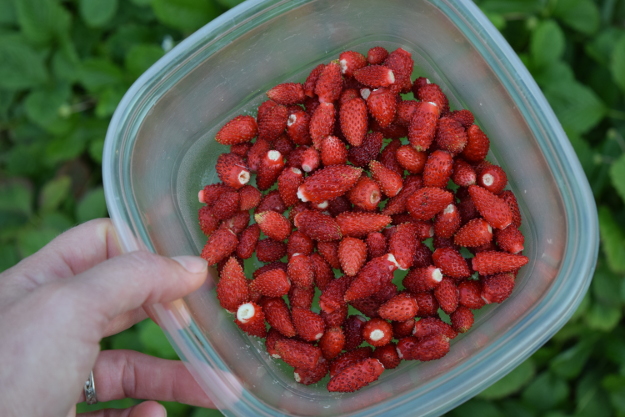
Special foods also include those that are expensive to buy, such as raspberries, rhubarb, and fingerling potatoes. (Why are fingerlings so expensive at the store? They actually yield more prolifically than regular potatoes!) There are tons of pricey herbs you can grow on the cheap at home, too.
Some special foods may not even be available at the grocery store at all.
My neighbor has a very small vegetable garden and chooses to grow plain green cabbage. Why? I’m sure it tastes the same as any farty old cabbage you can get at the store for 59 cents a pound. Grow something special.
#4 Don’t grow too much.
Surprise, surprise. When I grew 12 lettuce plants a couple of years ago, I learned the hard way that 12 lettuce plants is WAY too much lettuce for two people.
So I gave lettuce to my neighbors, and I gave lettuce to my friends. And I still had lettuce left over.
But you know what? It’s nearly impossible to throw perfectly good food on the compost pile. It feels so wrong to throw food away—especially freshly picked, delicious, home-grown, organic food!
So learn to calibrate how much you can actually use.

Choose varieties that match the amount of food you want to eat over the time period that works for you.
One Table Princess acorn squash plant makes a neat, compact, 3-ft. by 3-ft. mound and gives me the perfect amount of squashes over several weeks so that I can get my fill but don’t get sick of them.
Two dozen Tristar everbearing strawberry plants give me a few fruits for my morning oatmeal almost every day of summer. If I wanted a big batch all at once to make jam, I’d grow a June-bearing variety. (Here is a comprehensive post on how to grow strawberries.)
Some vegetables and berries freeze well for use later. This may be an option, but only if you have room in your freezer!
At first it feels good to give produce to your friends, but after a while it becomes a chore to get rid of it all. Your friends may even begin to avoid you, because in fact they may have taken that first 20 pounds of zucchini simply to be polite.
#5 Budget time for harvesting.
When you start a vegetable garden, you don’t realize how time-consuming the harvesting will be.
Maybe like me you imagined yourself setting down your Arnold Palmer and strolling into the garden in a pretty sundress with your handcrafted vintage garden hod on your arm. You do have a garden hod, right? You breeze through the garden, gathering your bounty, the delectable veggies tumbling into the hod in a picture of glorious abundance.
In reality, what usually happens is you realize you’ve forgotten to harvest anything for dinner, so you run out in bare feet in the rain. You pull some carrots, leaving a few lodged in the ground when you break off the tops. Then you root around with bare hands to fish out some potatoes and carry them all in the bottom of your dirty t-shirt to the hose to wash them off.
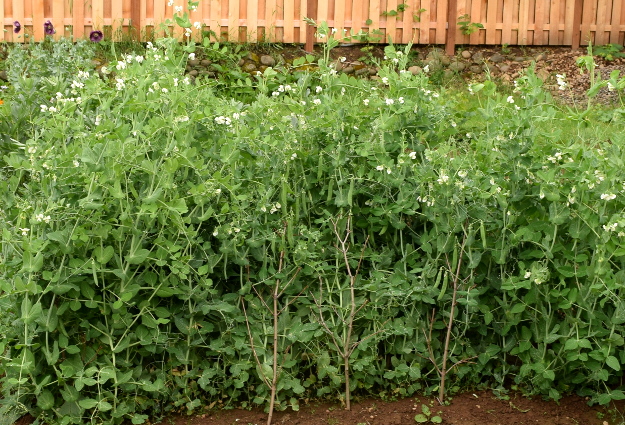
Harvesting is a big part of gardening. I don’t say this to discourage you. In fact, harvesting your own produce is immensely satisfying.
But you should know that potatoes will need to be dug and hosed off, then scrubbed again in the sink (and fingerlings have extra nooks and crannies).
Garden peas need to be picked and shelled.
Green beans picked and de-strung.
Corn picked and shucked.
Lettuce and spinach picked clean of slugs and run through the salad spinner.
Broccoli cut, picked clean of caterpillars, and washed.
Raspberries and blackberries and blueberries picked and picked and picked and picked.
#6 Someone in the household is going to have to know how to cook vegetables.
The good news is that flavorful homegrown vegetables don’t need fancy preparations in order to taste wonderful.
Snap peas I often simply blanch. If I’m feeling indulgent, I may sauté them with shallots and mint.
Carrots and parsnips I sauté with butter, brown sugar, and ginger.
Asparagus and green beans are to die for when drizzled with olive oil and sprinkled with sea salt and roasted.
I roast beets also, chop them, and then coat them with a sweet-and-sour glaze (white sugar and apple cider vinegar) and salt and pepper.
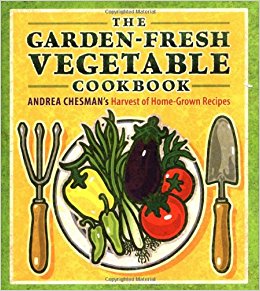
My favorite vegetable cookbook is The Garden-Fresh Vegetable Cookbook by Andrea Chesman. I’d love to know yours in the comments.
#7 Don’t grow foods you think are gross.
This should be an obvious one, but flip through a glossy, full-color seed catalog on a dreary winter day, and show me one vegetable that doesn’t look delectable. “Look at the beautiful beets!” you’ll squeal, even if you think beets taste like dirt.
I’ve had roasted store-bought rutabagas and I’ve also had them mashed with potatoes. Both ways were nasty. Still, I wanted the pleasure of growing them with my own hands, and I thought if I tried them one more time, maybe I’d change my mind. After all, I’m half Norwegian, and rutabagas are in our blood.
I grew a lovely crop one year, but surprise, surprise, they were the same disgusting, hard, cabbagey lumps I remembered. I didn’t even attempt to give them away.
#8 Grow daylilies in your vegetable garden.
Let me be clear: I’m not speaking of lilies, which are toxic, but daylilies. Among daylilies, I can only vouch for the common orange daylily (Hemerocallis fulva) as truly safe and tasty to eat.

I eat the flowers just after they have opened. I break them up and add them as colorful additions to summer salads.
Nothing could be easier to care for, and if I don’t get around to harvesting them, there are no guilty feelings, because then I get to see them in the garden. I posted about them here.
#9 Don’t bother saving seeds of these vegetables.
You’ll probably buy fresh seeds for your garden each year. But you may be curious about saving seed from your own garden to use the next year or to trade with other gardeners. Is this a good idea?
It depends upon the plant and your level of expertise.
In general, tomato-family plants, such as tomatoes, eggplants, and peppers, will come true from seed (resemble the mother plant) and are good for beginning seed-savers. Legumes such as beans and peas are also reliable, as is lettuce.
Cucumber, melon, and squash seed will come true if the plant is isolated from other varieties of its type.
Realize that the plants will take up room in the garden—not producing any food—while they are ripening seed.
Novice seed-savers should NOT bother with saving seed of cole crops such as broccoli or brussels sprouts. Other seeds you are better off buying (NOT saving) include carrots, beets, parsnips, radishes, and corn. Of course, you can try saving any of these—it’s just that you probably won’t get great plants from them.
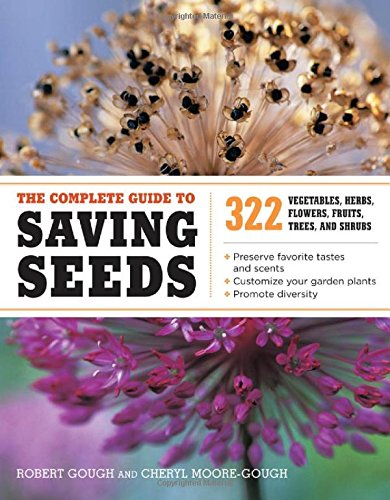
The Complete Guide to Saving Seeds by Robert Gough and Cheryl Moore-Gough is an excellent resource if you want to learn more about this subject.
#10 Make a map.
For me, one of the most tedious parts of growing a vegetable garden is the record-keeping. If I grow four varieties of carrots, I need to keep them straight so I can do a proper taste test later.
Labeling the rows with plastic plant tags and a Sharpie doesn’t work. Even the “Extreme Fade Resistant” markers will fade in the elements. Matte plastic tags and pencil work better, but now I forgo tags entirely and simply sketch a map that I keep in the house.
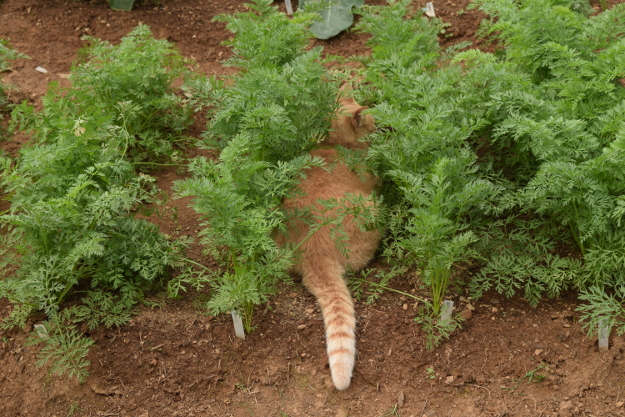
I also plant different varieties alphabetically from east to west. My carrots this year went in like this: Danvers, then Kuroda, then Red-Cored Chantenay, then Scarlet Nantes.
Bonus tip!
Read my post on fertilizing your vegetable garden, too, to make sure your veggies are all they can be nutritionally.
What are you growing this year? Let’s talk veggies in the comments!


Great advice, Amy!! I was especially intrigued by the information you picked up from Linda Chalker-Scott. I was a little busy up at the NWFGS this year so wasn’t able to attend her talk, too. Thanks for sharing it!
Thanks! You can go to the NWFGS website and get a copy of her handout. All of the speakers with a newspaper icon next to their name still have their handouts available for free download.
This is all really great advice. I’ve had a lot of the same experiences with my first vegetable garden. I did the same thing with beets that you did with rutabagas. They’ve always tasted like dirt to me, but I thought if I grew them, maybe they’d taste different. Nope. I love the recommendation about growing common daylilies. I’ve heard the blossoms are great stuffed with cream cheese, then breaded and fried, like trendy squash blossoms.
Also, George! So cute.
Beets are delicious! Mmm, I think a cardboard box would be good stuffed with cream cheese and deep fried. 🙂
George!! Great post Amy! I would also add that you need to keep records because you need to rotate those veggies around every year to keep soil healthy and keep bugs minimized 🙂
George has been a great helper in the garden this year. He is really getting into it. That is a good point about rotating crops. I do make it a point to grow something different in each spot every year.
Just started this year doing some gardening of my own with two raised beds (yeah, I know, they look so cool), but with scant items. One idea is to use bio (organic) fertilizer. The first shoots just started to crop up last week, how awesome! Now, how about some home grown fruits, Amy?
Aren’t those first shoots the greatest thrill? Each year, it is just as exciting to see them come up. I am interested in fruit trees, too, but right now all I have for fruits are strawberries, raspberries, blueberries, and the neighbor’s wild blackberries from hell that I have to beat back. Maybe a future post!
I’ll agree with most of your comments, gardeners will always quibble over the fine points….I was always a raised bed vegetable gardener, but I never built frames. I would spade all of the beds and hill them, crowned down the center, adding in the top layer of the paths inbetween, then mulching the paths thickly with wood chips. My issues were more around getting an early start and warmer soil temps/quicker growth than watering issues. I found the wood sides completely unnecessary. The only reason to use them was if you were building them up high enough so you didn’t have to bend over…something of a necessity if you aren’t going to invest enough into your structure. You are very right in that growing vegetables is work no matter how you chose to do it. If you can’t do the work then buy from those willing to do the work well!
My beds are actually raised beds, too, in the sense that they are raised about 4 inches or so higher than the paths. I go down the paths with a square shovel to clean them up. Not sure if it’s the best system, but it looks good if I keep on it and is a good use of space. Weeds can be a problem during the rainy seasons, so your wood chip method might be better then.
Amy, I really enjoyed the practical nature of your advice. From my own experience, I can corroborate all that you said!
I could get lots more tips from your garden for another article! Maybe another visit is in order. 🙂
I grew a six-pack of the darling romanesco: ate one, used one in an arrangement, the rest went to seed and attracted hordes of aphids. Richard grows tomatoes but it’s the farmers’ markets for me from here on out.
It’s certainly a commitment. Sometimes I regret putting in the veggie garden and wish I would have just concentrated on ornamentals and decided to go to the farmers’ market for veg. But then I start harvesting and it is so convenient and fresh and delicious!
Great post!
There are days I greatly miss the reduced size of my veggie garden, but it was so much time and effort. I will always grow a few tomatoes and now “spicy jamaican oregano”.
I agree that Daylilies are delicious. In China, they are called “Golden Needles” (金針) and are usually found as an ingredient in Hot & Sour Soup or Mu Shu Pork. I love their peppery flavor and will snack on the ugly ones in my garden.
You don’t have anything that’s ugly in your garden, Matthew! I may need a start of your spicy Jamaican oregano.
Great tips! I love your content, always well written and full of good info, keep it up!
Thank you so much!
I have also written tips on how to grow berries in containers (https://www.gardenloka.com/growing-strawberries-in-containers/) and I think it is pretty easy. Nothing beats fresh fruits and vegetables that you can just pick at home! 🙂
I just discovered your wonderful blog this morning. Thank you for sharing so much priceless experience and information. I know that takes a LOT of work! Your heart and passion shine through!
Thank you so much, Kristina! It is my passion, and I enjoy blogging about it. Happy gardening!
Great tips!. I learned a lot here.
I teach hands-on science classes for 1st – 12th graders near Atlanta, GA and appreciate your practical advice!
Thank you for your service! It’s wonderful that you’re teaching kids how to garden.
Hello Amy, thats a great point you make about not growing too much! I have done this myself many times and it is hard not to be wasteful.
Thanks,
Richard
Hi Amy, I really enjoyed reading your article and it is really helpful. I will surely follow the tips of growing vegetables and berries.
Thank you,
Richard
Good information for a Newbie like Me . Thanks for the same .
Hello, thank you for these precious and relevant tips for growing vegetables, I will for sure use the #6 daylilies!
On my side I have just finalized the design of my vegetable garden on my kitchen window. I designed the box from scrap wood from my terrace.
Here is the result, tell me what you think 🥰🥰🥰🥰
Thank you and don’t forget to turn on subtitles
https://youtu.be/x26chcpX04k